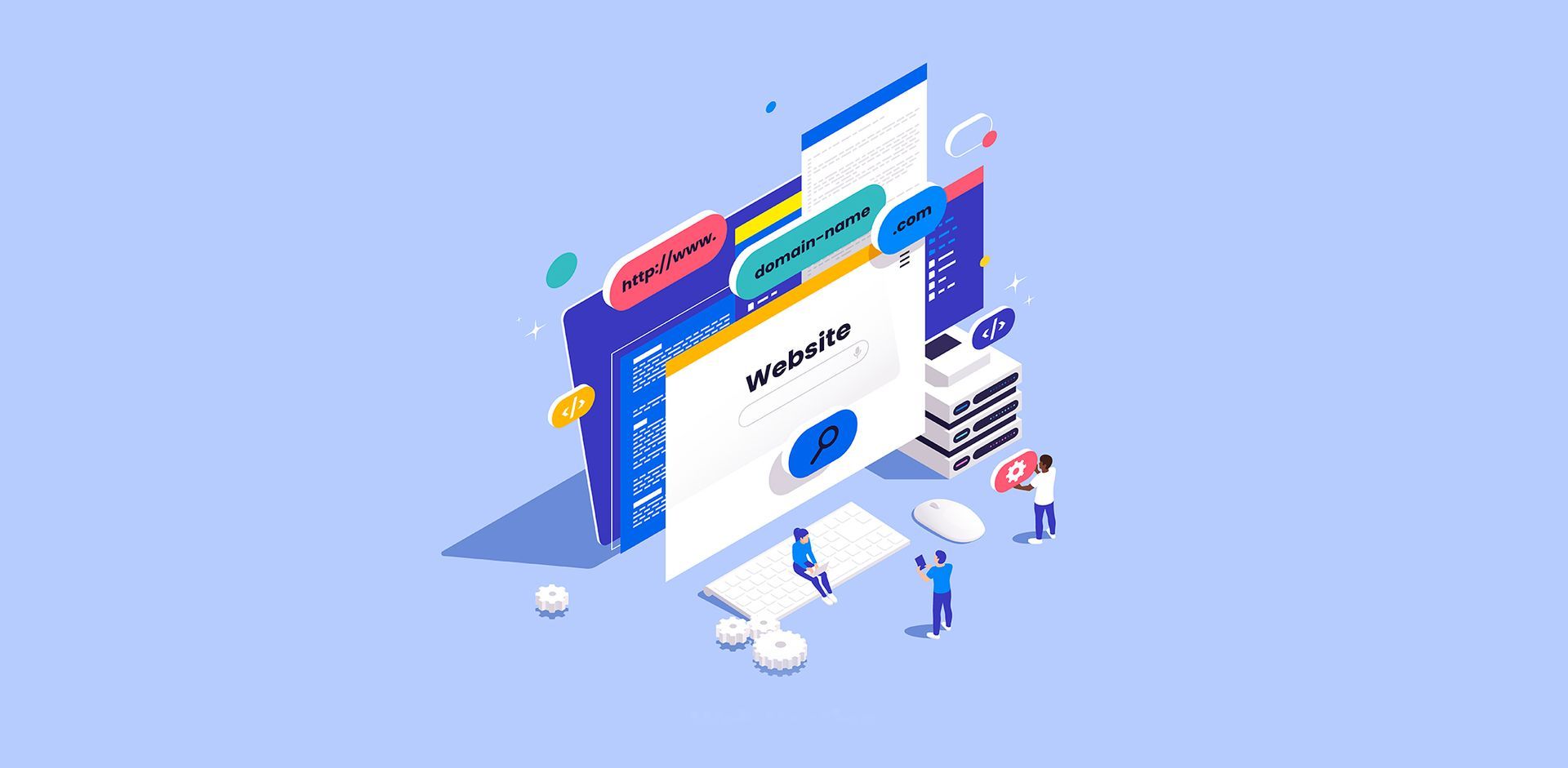Blog
Why Social Media Isn’t Enough for Construction Companies
Let’s be real — social media is great. It’s fast, it’s visual, and for many construction companies, it’s the go-to way to show off projects and connect with clients.
Top Articles

October 22, 2025
Your team is a goldmine of knowledge that often goes untapped. While business owners and marketing teams focus on selling, the people who interact directly with customers — technicians, advisors, stylists, builders — know exactly what questions clients ask, what problems they face, and what solutions truly make a difference. So why not turn that experience into authentic, valuable content for your website? In this post, you’ll learn how to transform your team’s knowledge into content that attracts customers, improves SEO, and builds trust . Benefits of Involving Your Team in Content Creation More authentic and relatable content Your team speaks in a natural tone that connects better with your audience — not in a stiff, corporate voice. Real, practical ideas Topics come directly from real customer problems, boosting your site’s relevance and SEO performance. Stronger team engagement When employees see their insights published, they feel proud and part of the company’s growth. Saves time for marketing and leadership You no longer need to come up with ideas from scratch — the knowledge already lives inside your organization. Checklist: How to Create Internal Content with Your Team 1. Set clear goals Before starting, define what kind of content you need: Step-by-step guides Success stories or case studies Expert tips or how-to’s Employee stories or company culture pieces 👉 Example: If you’re a construction business, you could create a post like “5 Common Mistakes When Waterproofing a Roof (and How to Avoid Them),” written by your lead foreman. 2. Use a simple template Make it easy for anyone to contribute. Provide a short structure, such as: Title or topic Problem it solves Steps or practical advice Supporting photo or video Author’s name and role Tip: Use tools like Google Docs or Notion to collect and review submissions in one place. 3. Host quick brainstorming sessions Schedule 20-minute monthly sessions where everyone shares questions clients ask or recent experiences worth sharing. Keep all ideas in a content list for future posts. 4. Appoint an editor or content reviewer This person should refine tone, check grammar, and ensure the content aligns with your brand style — without losing the original voice of the contributor. 5. Recognize and share contributions When publishing employee-created content, give them credit publicly. Example: “This article was written by Laura, our Customer Service Specialist, who shares her best tips for keeping your team happy.” A small recognition like this builds motivation and encourages others to participate. Make Your Website Reflect the Best of Your Team The most valuable content doesn’t always come from agencies or copywriters. It comes from the people who make your business run every single day. Turning their knowledge into stories, guides, or helpful tips is one of the most powerful ways to build a trustworthy, human-centered brand . At MarkitBull , we help companies like yours organize, edit, and optimize team-driven content so it not only inspires but also drives traffic, leads, and growth. 👉 Contact us today and let’s make your team shine online.

October 15, 2025
In today’s digital world, every detail matters. Speed, trust, and user experience can make the difference between closing a sale or losing a potential customer. That’s where widgets come in — small tools that can make a big impact on how your website performs and how customers interact with your brand. Here are the best widgets to give your business a serious boost. 1. Live Chat and WhatsApp Business Why you need it: your customers expect instant answers. With a live chat or WhatsApp widget , you can answer questions, schedule appointments, or close deals directly from your site. Examples: Tidio, Crisp, Intercom, WhatsApp Business API. Pro tip: place the chat icon at the bottom-right corner and set up automated replies for after-hours. 2. Booking and Appointment Widgets 👉 Perfect for: service-based businesses, salons, health clinics, or consultants. With Calendly or SimplyBook.me , clients can book appointments instantly without messaging you. Less friction, more efficiency, and a smoother experience. Bonus: integrate it with Google Calendar or your CRM to send automated reminders. 3. Customer Reviews and Testimonials 👉 Why it matters: people trust other customers more than ads. Add a reviews widget (Google, Trustpilot, or Facebook) to showcase real experiences and boost credibility. Example: “Over 500 satisfied clients can’t be wrong.” A little social proof goes a long way. 4. Smart Pop-Ups and Newsletters 👉 Goal: collect leads or promote offers — without being annoying. Widgets like OptinMonster , Sumo , or Mailchimp help you create pop-ups, banners, or sign-up forms that appear at the right time. Tip: offer something valuable — like a discount, guide, or ebook — in exchange for their email. 5. Maps, Translators, and Accessibility Tools 👉 Why it helps: improves user experience and trust. Add an interactive Google Map , a language switcher , or a dark/light mode toggle to make your site more accessible and human. Small touches that create big results. 6. AI-Powered Chatbots 👉 The future is here. AI chatbots can answer FAQs, recommend products, and even close sales while you sleep. Try tools like Manychat, ChatGPT API, or Botpress for 24/7 customer interaction. Tip: keep the tone friendly and human — automation doesn’t have to sound robotic. Final Thoughts: Small Widgets, Big Results Adding the right widgets not only enhances your site’s look but also its performance and profitability. These tools are small investments that make a huge difference in how customers experience your brand. Boost Your Website with Markitbull At Markitbull , we design fast, optimized websites packed with the tools your business needs to grow. If you want your site to work for you — not the other way around — we’ve got you covered. Learn more at www.markitbull.com

September 30, 2025
1. 24/7 Customer Support Chatbots and virtual assistants can answer frequently asked questions, guide your customers through the buying process, and even recommend products or services. 👉 Example: A hair salon can use a chatbot to automatically schedule appointments, reducing calls and manual messages. 2. Get to Know Your Audience Better AI analyzes user behavior: what products they view, when they make purchases, and how they interact with your social media. 👉 Example: A restaurant can identify which dishes are most popular on certain days and use that information to create targeted promotions. 3. Create Content in Minutes Not sure what to post on social media? AI-powered tools can help you write texts, design images, and even plan entire content calendars. 👉 Example: A construction company can create educational posts with maintenance tips without spending hours brainstorming every detail. 4. Optimize Internal Processes From organizing your schedule to managing inventory, AI can automate time-consuming and energy-draining tasks. 👉 Example: An e-commerce business can use AI to predict which products will be in higher demand and avoid running out of stock. 🌟 Beyond the Hype: Real Results Many people believe AI is just a passing trend or too complex for their business. The reality is that it’s already generating results for thousands of companies of all sizes. Reduces operational costs. Increases customer satisfaction. Enables decisions based on real data, not assumptions. Improves team productivity. While some still see AI as “the future,” those who use it today are already enjoying a competitive advantage. 💡 Tips for Implementing AI in Your Business Start small. You don’t need a massive system from day one. A chatbot or a content generator can be a great first step. Train your team. Technology is more effective when the people using it understand its potential. Measure results. Define clear goals: do you want to save time, increase sales, or improve customer service? Track how AI helps you reach them. Scale gradually. Once you see results, add more solutions that adapt to your processes. 🚀 The Time to Take the Leap is Now Artificial Intelligence isn’t here to replace you—it’s here to multiply what you already do. Think of it as having an extra team that works for your business day and night. At Markitbull , we help you integrate digital and technological solutions tailored to your needs—without complications, and with the clear goal of helping your business grow faster, more efficiently, and sustainably. 👉 If you’re ready to take the leap and use AI as your strategic ally, let’s talk. We want to help you transform your idea into a business that takes off. 📩 Contact us here and discover how Artificial Intelligence can be the key to boosting your growth.

September 20, 2025
We’ve all had a brilliant business idea at some point—the moment when you think “this could really work.” But the truth is, most of those ideas never materialize. They remain scribbled in a notebook, shared in a casual conversation, or just floating around in our minds. The difference between those who dream and those who build solid businesses lies in one process: maturing, grounding, and testing those ideas . Here’s how you can do it: 1. Mature Your Idea It’s not enough for an idea to be novel; it must solve a real problem . Ask yourself: What need am I addressing? Who is my solution truly for? How does it stand out from what already exists? At this stage, research and feedback are key. Talk to potential customers, study competitors, and validate that your proposal has a real space in the market. A matured idea is one that grows from insight, data, and external perspectives. 2. Ground It in a Plan Inspiration without action remains a dream. For your idea to become a project, you need to put it into structure . This is where tools like these come in: Value Proposition: What do you offer that no one else is offering? Customer Journey Mapping: Understand how people discover, consider, and choose your solution. MVP (Minimum Viable Product): A basic prototype to validate your assumptions without huge investments. Grounding your idea doesn’t mean solving everything at once—it means defining a clear path that allows you to move forward step by step. 3. Test It in the Real World The best ideas aren’t validated in your head, but in the market. Testing means putting your concept in front of real potential customers and watching what happens. A well-designed website is one of the most effective ways to do this. It allows you to: Showcase your value proposition to the world. Measure real interest (visits, clicks, completed forms). Gather quick feedback to refine your product or service. With real data, you can decide whether your idea deserves more investment, needs adjustments, or should pivot in a new direction. From Idea to Action Many people stay stuck in “someday” because they think they need lots of money, time, or perfection to get started. But the truth is, the first step is easier than it seems . At Markitbull , we believe no idea should stay hidden. Our mission is to help you turn your vision into a digital reality that not only looks great but also drives real results. We design strategic, fast, and optimized websites so your business has the presence it needs from day one. Because your idea doesn’t deserve to wait—it deserves to take off. 🚀 👉 Take the leap today. Discover how we can help at www.markitbull.com/contact-us

September 13, 2025
Today more than ever, business deals are closed online . Clients no longer expect in-person meetings or office visits—they want quick solutions, straight from their phone or computer, with confidence and security. At Markitbull , we’ve helped many businesses transform their digital presence not just to attract leads, but to close real deals online. Here’s what we’ve learned. 1. Prepare the ground—but don’t stop at attraction A professional website and a digital strategy are the entry point: they give you visibility, build trust, and put you in front of qualified prospects. But that’s only the beginning. The real challenge lies in what comes next: the negotiation and the close . 2. Digital platforms where deals happen Today, there are multiple spaces where business agreements are finalized: Video calls (Zoom, Google Meet, Teams): the modern boardroom. Make sure you have a strong connection, clear presentations, and a professional setting. Instant messaging (WhatsApp Business, Telegram): perfect for quick agreements, sending proposals, and solving questions in real time. Digital signatures (DocuSign, Adobe Sign, HelloSign): legal contracts without papers or physical meetings. They speed up the process and add formality. E-commerce or payment gateways: for standardized products or services, integrating a direct payment button can be the simplest and most effective close. 3. Practical tips to close the deal online Build trust immediately: before talking about price, reinforce your experience with case studies, reviews, or testimonials. Be clear and transparent: no ambiguity on pricing, timelines, or conditions. Digital clients expect simple, straightforward information. Offer options, not confusion: two or three service plans are enough—too many alternatives can slow down decisions. Use visual, easy-to-digest proposals: interactive PDFs or online presentations that highlight value, benefits, and next steps. Integrate digital signing: don’t lose momentum. If the client says “yes,” send the contract within minutes. Ensure a smooth payment experience: trusted gateways like Stripe, PayU, or MercadoPago inspire security at checkout. Don’t skip follow-up: if the client hesitates, schedule a new call or send a polite reminder summarizing your proposal. 4. Digital contracts: the final step The contract is the ultimate point of closure. Some recommendations for handling it digitally: Simple and clear language: avoid unnecessary legal jargon. Transparent conditions: delivery times, responsibilities, and payment terms. Recognized digital signatures: beyond being legal, they show professionalism and reduce fraud risk. Secure storage: keep contracts in the cloud for easy access and backup. A well-crafted digital contract builds trust and speeds up decision-making. 5. Closing is just the beginning Once the deal is sealed, strengthen the relationship: thank the client, maintain active communication, and deliver on your promises. A satisfied customer is your best salesperson for future deals. 🚀 How Markitbull helps you close more deals online At Markitbull , we don’t just design websites and digital strategies. We help you integrate closing tools such as: Direct client chat solutions. Payment gateway integrations. Automated follow-ups. Digital contracts and professional proposals. This way, your business doesn’t stop at generating visits: it closes deals and grows revenue online .

August 16, 2025
For small businesses, every client counts. Your website isn’t just an online presence—it’s often the very first impression potential customers get of your company. But here’s the catch: if your website takes too long to load, many of those potential clients won’t stick around long enough to learn what you offer. The Hidden Cost of a Slow Website Slow pages are more than just annoying—they directly impact your bottom line: Lost Opportunities: More than 50% of visitors leave if your site takes over 3 seconds to load. For a small business, that could be the difference between winning a project or losing it to a competitor. Poor Search Visibility: Google rewards speed. A slow site means lower rankings, less visibility, and fewer leads. Damaged Perception: Customers often equate website performance with business quality. If your site feels outdated, they may assume your services are too. For small businesses trying to grow, these missed opportunities can add up quickly. Why Website Speed Matters More for Small Businesses Big companies may have the budget to absorb lost traffic, but small businesses don’t. If your site isn’t fast, you’re essentially telling potential customers: “Try somewhere else.” That’s a risk no small business can afford. How to Check If Your Site Is Slow Run a quick test with Google PageSpeed Insights or GTmetrix. Test your site on mobile devices—most customers will visit you there first. Ask yourself: Would I wait for this page to load if I were a new visitor? Simple Fixes for Faster Performance You don’t need a huge budget to make improvements. Start here: Compress Images: Reduce file sizes without losing quality. Use Modern Hosting: Reliable hosting keeps your site quick and responsive. Streamline Plugins and Code: Remove what you don’t need—less clutter, more speed. Enable Caching: Store data so returning visitors get an instant load. Use a Content Delivery Network (CDN): Speeds up delivery for users everywhere. Turning Website Speed Into Growth When your website loads quickly, customers stay longer, trust you more, and are far more likely to contact you. For small businesses, this translates directly into: Higher chances of closing new projects. Stronger credibility with clients. A competitive edge over slower competitors. Ready to Win More Clients? Your website should work for you, not against you. If your site is slow, you’re already losing opportunities before you even know they existed. 👉 At Markitbull , we design and build fast, professional websites for small businesses—helping you attract more clients and close more projects. Because in today’s digital world, speed isn’t optional, it’s essential.
How to Hire the Right Web Designer: Expert Guide + Actionable Checklist
Your website isn’t just a business card—it’s your #1 salesperson, brand ambassador, and trust-builder...



